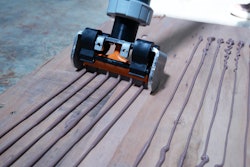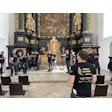
 The Senator in 2011.
The Senator in 2011.
When the 165-foot-tall bald cypress called the Senator burned down three years ago in a county park north of Orlando, Fla., where it had grown for more than 3,500 years, there was outrage.
“I had parents who recalled going to see the Senator with their grandparents, and their grandparents had been there with their grandparents,” Jim Duby, program manager for Seminole County park, told Smithsonian Magazine.
Like the Senator, National Champion trees—a term coined in 1940 for the biggest tree of each tree species in the United States—are revered. What would happen if the 826 trees on the list met an end like the Senator?
The Archangel Ancient Tree Archive is cloning Champion trees and other trees of note, like trees near Mount Vernon and Monticello, with the hope that these trees will effectively never die, according to Smithsonian.
The group has a list of around 100 iconic trees around the world from which they would like to collect young shoots. The shoots are taken to its facility in Copemish, Mich., and “planted” in a test tube to allow the seedlings to grow.
These trees have stood the test of time and Archangel’s lead propagator, Jake Milarch, told Smithsonian he attributes their longevity to their genes, which makes them good candidates for cloning.
Other scientists aren’t so sure that cloning a few trees should be the focus of conservationists. Instead, they argue, whole parcels of land should be saved to protect the health of the entire ecosystem, according to Smithsonian.
“I think it’s a wonderful idea. I think to preserve those species that have stood the test of time is necessary. But it’s not sufficient,” Charles Maynard, director of the American Chestnut Research and Restoration Center in New York, who is fighting his own fight for the preservation of chestnut trees in America, told Smithsonian.
Still, officials from Seminole County park feel cloning is the best decision at the moment. In fact, they had the Senator cloned almost 20 years ago and planted two of those saplings in 2013.
And they’re going to have another tree, the 2,000-year-old, 89-foot-tall Lady Liberty, cloned soon.
“Given what happened three years ago to the Senator,” Duby from Seminole County told Smithsonian, “I think we’d be kicking ourselves if, God forbid, something similarly tragic happened to Lady Liberty and we hadn’t done the cloning.”























